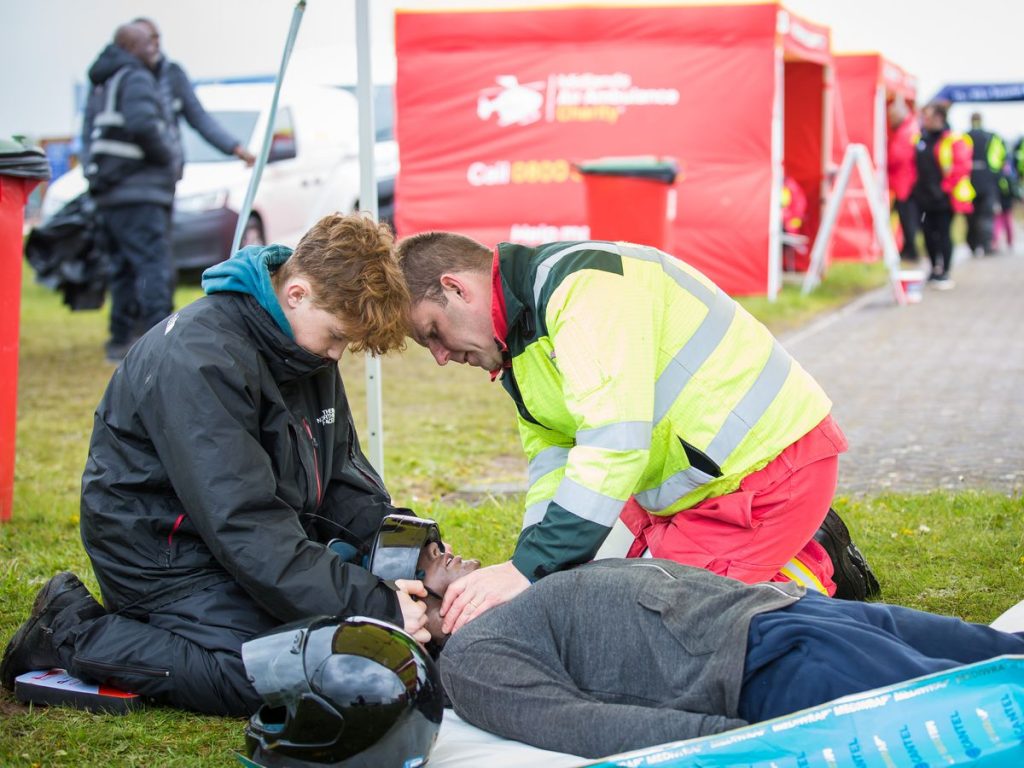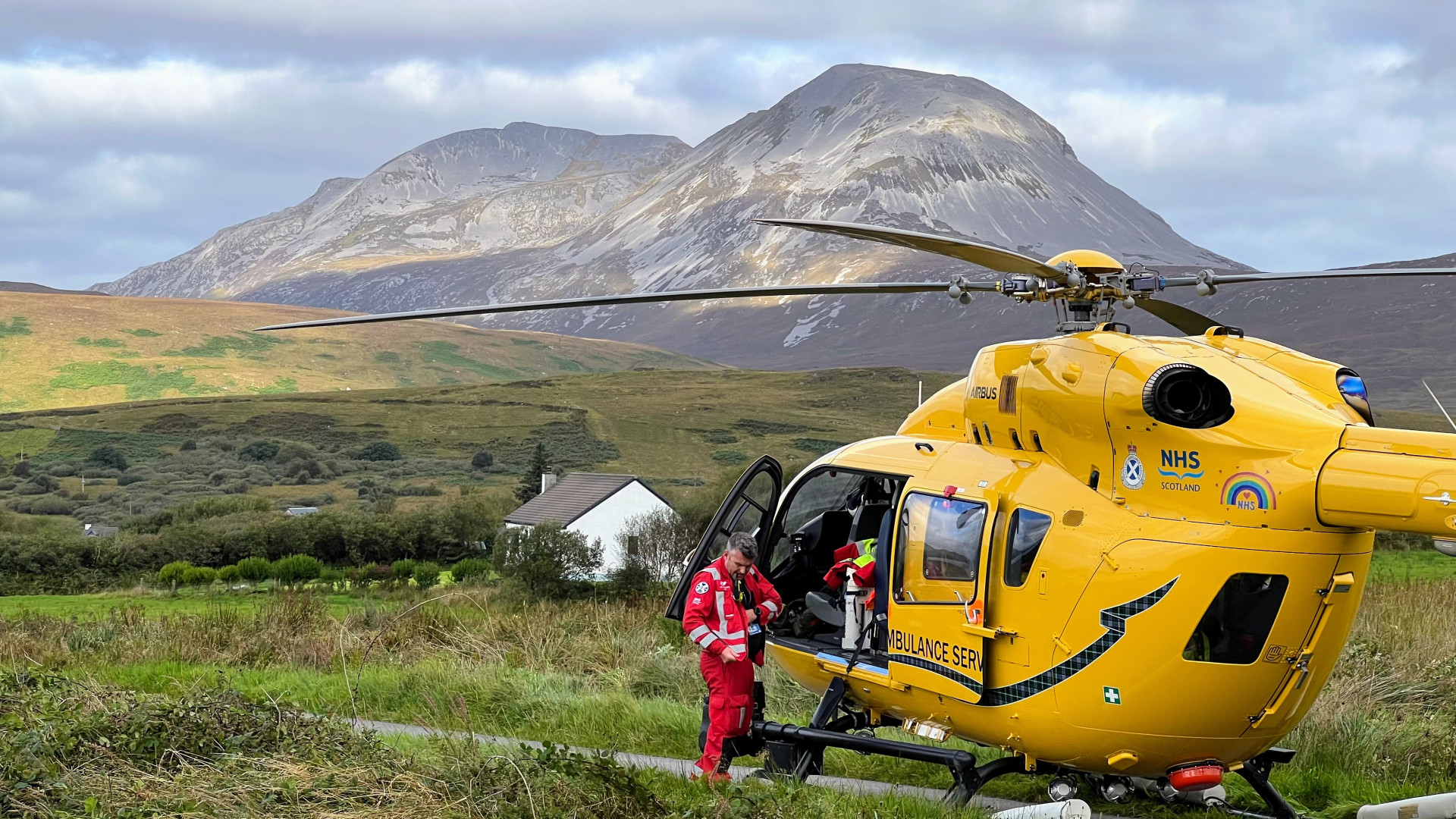Imagine a bustling hub of activity where the difference between life and death lies in the swift and efficient coordination of emergency medical services. These hubs, known as Air Ambulance Base Stations, represent the epicenter of lifesaving operations. Their strategic locations, equipped with state-of-the-art facilities and highly skilled medical personnel, play a pivotal role in providing critical care to those in need. In this article, we will explore the crucial functions and significance of these base stations in the realm of air ambulance services. So, buckle up as we delve into the world of Air Ambulance Base Stations and unravel the lifesaving endeavors that unfold within their walls.

Understanding Air Ambulance Base Stations
Air Ambulance Base Stations play a crucial role in the efficient and effective provision of air ambulance services. These specialized facilities serve as the home base for air ambulance operations, providing necessary infrastructure, resources, and support for medical evacuation missions. In this article, we will explore the key features and functions of air ambulance base stations, highlighting their significance in the world of emergency medical services.
What Are Air Ambulance Base Stations?
Air ambulance base stations serve as the central hub for air ambulance operations. These stations are strategically located to ensure optimal coverage and accessibility to the surrounding regions. They typically house several specialized facilities, including hangar space for aircraft storage, maintenance and repair units, fuel storage facilities, communication systems, crew training facilities, and much more. These base stations act as the nerve center for coordinating and dispatching air ambulance missions, ensuring the swift delivery of critical care to those in need.
Why Are They Important?
Air ambulance base stations are of paramount importance to the success of air ambulance operations, as they support the entire spectrum of medical evacuation services. These base stations provide a centralized location from which air ambulance missions can be launched and coordinated, reducing response times and increasing efficiency. They also serve as a secure and reliable facility for housing and maintaining the air ambulance fleet, ensuring the aircraft are always ready for rapid deployment. Without well-equipped and strategically located base stations, the timely and effective delivery of emergency medical care would be significantly compromised.
Key Features of Air Ambulance Base Stations
Let’s now delve into the key features and components of air ambulance base stations, which enable them to effectively carry out their lifesaving activities.
Location and Accessibility
Choosing Optimal Locations: The location of an air ambulance base station is critical. It needs to be strategically situated to provide swift access to a wide coverage area while considering factors such as population density, geographical challenges, and emergency service demands. Base stations are often located near major cities or regions with high healthcare service demands to ensure quick response times.
Proximity to Healthcare Facilities: To support efficient medical evacuation missions, air ambulance base stations are strategically situated in close proximity to healthcare facilities such as hospitals, trauma centers, and specialized medical facilities. This proximity allows for seamless patient transfers and ensures that critically ill or injured individuals receive the specialized care they require as quickly as possible.
Access to Major Roads and Airports: Air ambulance base stations need to have easy access to major roads and airports. This allows for rapid ground transportation to and from the base station, as well as easy integration with other modes of transportation. Access to airports enables swift air ambulance dispatches and ensures that patients can be transported to distant locations without delay.

Facilities and Infrastructure
Hangar Space for Aircraft Storage: Air ambulance base stations provide ample hangar space for the safe storage and maintenance of the air ambulance fleet. These hangars are equipped with specialized equipment and infrastructure to ensure the aircraft remain in optimal condition, ready for immediate deployment when needed.
Maintenance and Repair Units: Base stations are equipped with maintenance and repair units staffed by skilled technicians and engineers. These units are responsible for carrying out regular inspections, servicing, and repairs of the air ambulance fleet. This ensures that the aircraft are always in top-notch condition, minimizing the risk of mechanical failures during critical missions.
Fuel Storage Facilities: Air ambulance base stations have dedicated fuel storage facilities to ensure an uninterrupted supply of aviation fuel. It is imperative that the aircraft have sufficient fuel reserves at all times to maintain their operations without delays caused by refueling.
Communication and Technology
Advanced Communication Systems: Air ambulance base stations are equipped with advanced communication systems to establish seamless communication between the base station, the air ambulance crew, and other relevant stakeholders. These systems enable real-time coordination, ensuring effective collaboration and swift decision-making during medical emergencies.
Telemedicine Capabilities: The base stations often have telemedicine capabilities, allowing medical professionals at the base to remotely support the air ambulance crew during missions. Through telemedicine, the crew can receive expert medical advice, guidance, and consultations, ensuring optimal patient care even in challenging situations.
Weather Monitoring and Reporting: Air ambulance base stations closely monitor weather conditions, as adverse weather can significantly impact flight operations. These stations have access to accurate weather monitoring systems and specialized meteorological support, enabling them to make informed decisions regarding flight safety and mission feasibility.
Crew Training and Facilities
Living Quarters and Amenities: Air ambulance base stations provide living quarters for the air ambulance crew, as they often need to stay at the base station for extended periods during on-call shifts. These living quarters offer comfortable accommodations, amenities, and recreational facilities to ensure the well-being and readiness of the crew.
Crew Training and Simulation Centers: Ensuring the highest standard of care, air ambulance base stations provide crew training centers equipped with state-of-the-art simulation facilities. These centers offer realistic scenarios for crew training, allowing them to practice and refine their skills in a controlled environment, replicating the challenges they may encounter during missions.
Medical Equipment and Supplies: Base stations are equipped with medical equipment and supplies necessary for air ambulance operations. From advanced life support equipment to specialized medical devices, these facilities ensure that the air ambulance crew has access to everything they need to provide critical care during missions.
Air Ambulance Operations
Dispatch and Coordination Services: Air ambulance base stations serve as the central dispatch and coordination point for air ambulance missions. Dispatch teams ensure the efficient allocation of aircraft and crews, responding promptly to emergency calls. They coordinate with healthcare providers, ground transportation teams, and other relevant entities to ensure seamless operations.
Flight Planning and Optimization: Base stations employ experienced flight planning specialists who analyze various factors such as distance between locations, weather conditions, and patient’s condition to optimize flight paths and minimize travel time. Efficient flight planning ensures that patients receive timely and appropriate care, maximizing chances of survival and recovery.
Safety and Security Measures: Air ambulance base stations prioritize safety and security measures to ensure the well-being of the crew, patients, and aircraft. These measures include strict adherence to aviation regulations, safety audits, regular training on emergency procedures, and implementing state-of-the-art security systems to safeguard the base station and its assets.

Emergency Medical Services
On-site Medical Personnel: Air ambulance base stations house highly trained medical professionals who are available on-site 24/7. These medical personnel are ready to respond to emergencies, providing immediate medical assistance to stabilize patients before transport. They ensure that the air ambulance crew has all the necessary medical information, supplies, and support for each mission.
Medical Evacuation Equipment: Base stations are equipped with specialized medical evacuation equipment to facilitate safe and efficient patient transfers. From stretchers and immobilization devices to advanced monitoring and treatment equipment, base stations ensure that patients receive the highest level of care throughout their journey.
Emergency Medical Supply Management: Air ambulance base stations have dedicated teams responsible for procuring, organizing, and managing emergency medical supplies. From medications and consumables to specialized medical devices, these teams ensure that the air ambulance fleet is stocked with the necessary supplies for any scenario, minimizing delays during critical missions.
Air Ambulance Fleet Management
Aircraft Maintenance and Upkeep: The base stations have aircraft maintenance teams responsible for ensuring the air ambulance fleet is always in optimal condition. Regular inspections, scheduled maintenance, and repairs are carried out to keep the aircraft airworthy and ready for immediate use. The maintenance teams follow strict protocols and industry standards to ensure the safety and reliability of the fleet.
Aircraft Deployment and Rotation: Base stations strategize and plan the deployment and rotation of the air ambulance fleet to optimize coverage and response times. They consider factors such as aircraft availability, crew schedules, location demands, and service priorities to ensure that the right aircraft are deployed at the right time and place.
Fleet Expansion and Replacement: Base stations conduct regular evaluations of the air ambulance fleet to determine if fleet expansion or replacement is necessary to meet evolving demands. They assess factors such as aircraft age, performance, capacity, and technological advancements to make informed decisions regarding fleet enhancement and replacement, ensuring that the most advanced and suitable aircraft are utilized.

Collaboration with Healthcare Providers
Partnerships with Hospitals and Clinics: Air ambulance base stations foster partnerships with hospitals and clinics in their coverage areas. These partnerships enable seamless coordination, information exchange, and mutual support between air ambulance services and healthcare providers. Collaborating with these institutions ensures a streamlined continuum of care for patients, from immediate medical response to specialized treatment facilities.
Medical Crew Exchange Programs: Base stations often engage in medical crew exchange programs with hospitals and clinics. These programs allow medical professionals from different institutions to gain valuable experience and exposure by working together. Such collaborations strengthen the skills and knowledge of the air ambulance crew, facilitating the delivery of high-quality care to patients.
Sharing Best Practices and Research: Air ambulance base stations actively participate in sharing best practices, research findings, and advancements in medical evacuation techniques. They collaborate with healthcare providers, academic institutions, and industry experts to contribute to the advancement of air ambulance services. Sharing knowledge and experiences helps in driving continuous improvements across the field, benefiting patients and the wider healthcare community.
Regulations and Accreditation
Air Ambulance Licensing and Certification: Air ambulance base stations comply with all relevant regulations and obtain the necessary licenses and certifications. These regulations ensure that the base stations adhere to industry standards, safety protocols, and operational guidelines. Maintaining appropriate licenses and certifications is crucial to maintain the trust of patients, healthcare partners, and regulatory authorities.
Adherence to Safety Regulations: Base stations prioritize safety in all aspects of their operations. They strictly adhere to aviation safety regulations, including aircraft maintenance, crew training, flight operations, and safety audits. Safety protocols are implemented and reviewed regularly to mitigate risks and ensure the well-being of all involved in air ambulance operations.
Membership in Professional Associations: Base stations often maintain memberships in professional associations related to air ambulance and emergency medical services. These associations provide a platform for continued education, knowledge-sharing, and collaboration among industry peers. By actively participating in these associations, base stations stay updated with the latest industry developments and standards, allowing them to continuously improve their operations.
In conclusion, air ambulance base stations serve as critical lifelines for emergency medical services. With their strategic locations, specialized infrastructure, advanced technology, and dedicated medical crews, these base stations play a pivotal role in delivering timely and life-saving care to those in need. By ensuring optimal fleet management, collaborating with healthcare providers, and adhering to rigorous safety standards, air ambulance base stations continue to be the backbone of lifesaving activity in medical emergencies.




